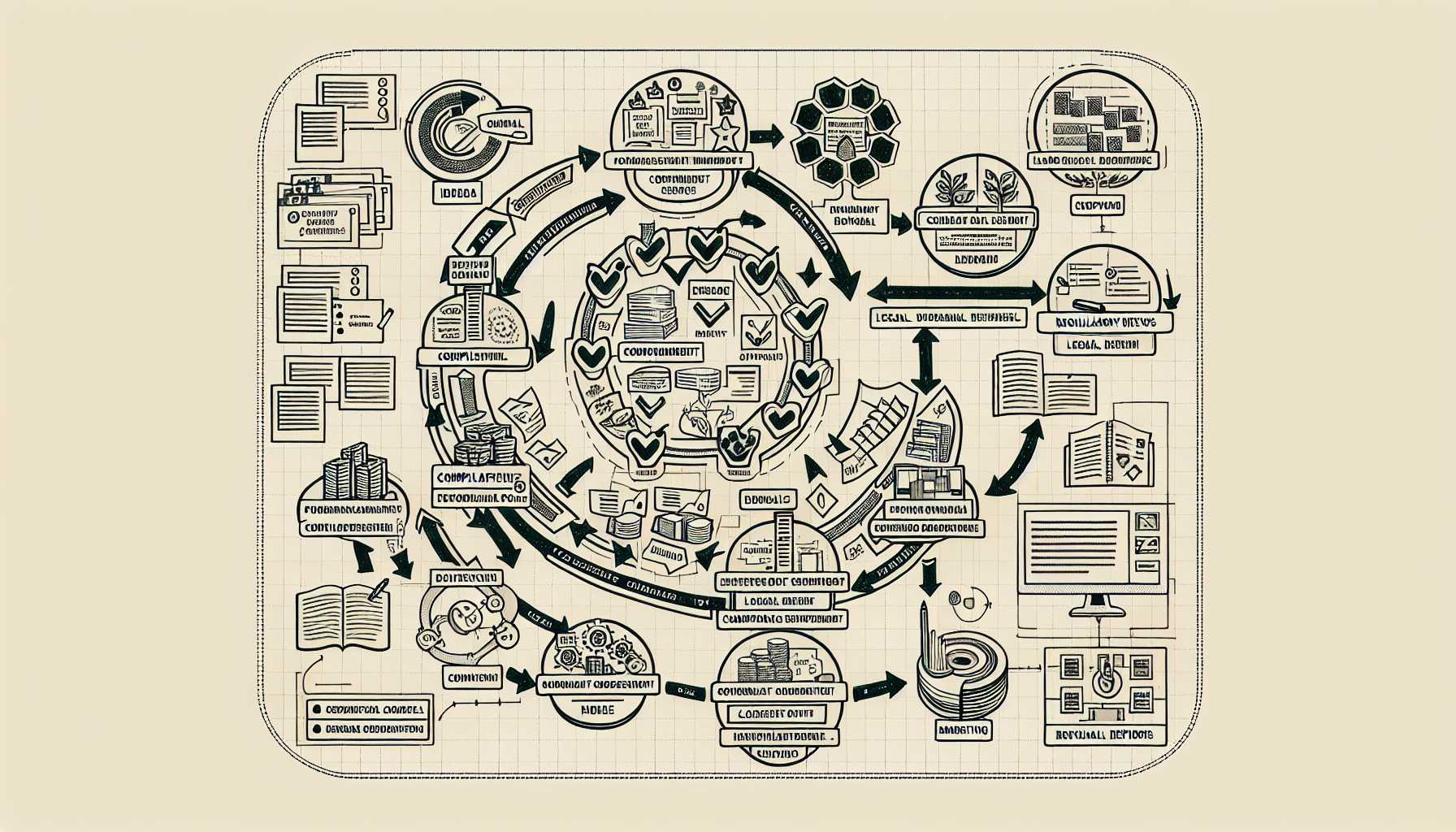Welcome, seasoned Product Managers! In today’s tech landscape, the issue of legal compliance and encountering regulatory challenges have become non-negotiable components of product management. I’ve trodden this complex terrain throughout my career and have wrestled with staying agile while ensuring products meet the rigorous compliance standards. Let’s explore some of these waters together.

The Ever-Changing Compliance Landscape
In my experience, one of the biggest hurdles in managing product legal compliance is the dynamic nature of regulations. Industries like fintech, healthtech, and edutech, are prone to frequent regulatory updates. Keeping abreast of these changes while addressing market needs can be daunting.
Continuous Learning: Invest time in continuous learning and employ a dedicated compliance officer or team. Regular training sessions and updates for the broader team are integral. And yes, these trainings have saved my products more than once from unintended non-compliance pitfalls.
Networking: Forming alliances with other product leaders and participating in consortiums related to your product’s industry can provide early insights into upcoming regulatory changes. In one of my past roles, an industry peer tipped us off to upcoming EU regulations which allowed us to pivot our strategy in time.
Developing a Compliance-First Mindset
Educating and cultivating a compliance-first mindset within the product team goes a long way. This involves integrating compliance checks and considerations at every stage of the product lifecycle, from ideation to retirement.
Roadmap Inclusion: I remember when integrating GDPR requirements into our product roadmap helped us to front-load critical privacy features before the deadline, avoiding costly reworks.
Design Thinking: Utilize design thinking workshops with compliance as a stakeholder. It can unveil innovative ways to meet regulatory requirements without compromising on user experience or business goals.
Collaboration with Legal and Regulatory Experts
Developing a strong partnership with legal and regulatory experts has always been paramount.
Regular Check-ins: Schedule regular check-ins between product teams and legal advisors to discuss the implications of new features or changes. I’ll never forget the redesign we had to do when our legal team pointed out potential compliance issues with our data storage methodology weeks before launch. Crisis averted!
External Consultants: If in-house expertise is lacking, don’t hesitate to bring in external consultants. They were a key asset when we expanded our product to a new geographical market with unfamiliar regulations.
Utilizing Technology for Compliance
The smart use of technology can streamline the compliance process immensely.
Compliance Tools: Employ software tools designed for regulatory compliance tracking. I’ve seen a tool implementation reduce our compliance-related workloads by as much as 30%.
Machine Learning: Wherever possible, harness Machine Learning algorithms to predict potential compliance risks based on data trends. This approach once helped us proactively address compliance issues in our predictive analytics features.
Incorporating Compliance into User Stories
Another technique that has been crucial is integrating compliance requirements into user stories and acceptance criteria.
User Story Example: As a user, I want my personal data to be encrypted, so that I comply with data privacy laws.
This inclusivity ensures developers and QAs are constantly aware of compliance factors. During one project, this practice helped identify a security flaw that would have been non-compliant, ultimately steering us clear from hefty fines.
Preparing for Audits and Certifications
Audits and certifications can be stressful, but with proper preparation, they can be transformed into a strategic advantage.
Mock Audits: Conducting internal audits or “dry runs” can prepare the team for the real thing. In the lead-up to an ISO certification audit, this practice helped us identify and rectify several non-compliance issues.
Documentation: Maintain meticulous documentation. An up-to-date compliance document repository was my savior when faced with a sudden regulatory inquiry.
Looking Ahead: Anticipation Over Reaction
Finally, adopting a proactive rather than reactive stance to compliance can set the tone for successful product management in the tech industry.
Regulatory Technology: Invest in regulatory technology (RegTech) to gain insights and predictive analysis. It was a RegTech solution that once allowed us to adjust our product strategy in anticipation of changes in the financial sector which ultimately kept us ahead of the competition post-regulation change.
In closing, my journey through the labyrinth of legal compliance has taught me valuable lessons. By embedding compliance into the DNA of your product management practices, you optimize for both innovation and regulation. Navigate these waters carefully, and you’ll emerge not only compliant but competitive.
Until next time, stay compliant and stay ahead!
